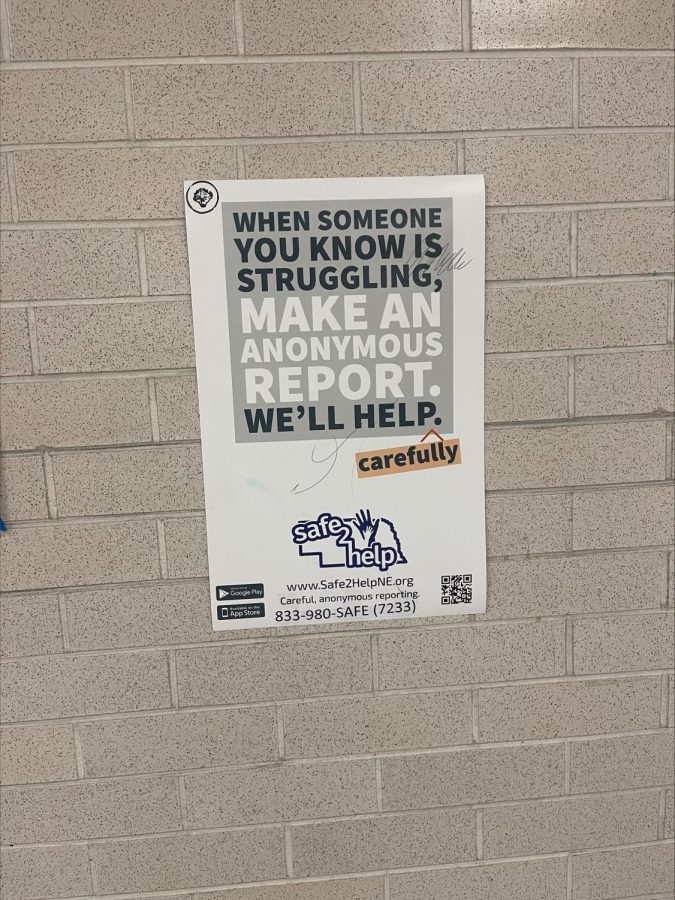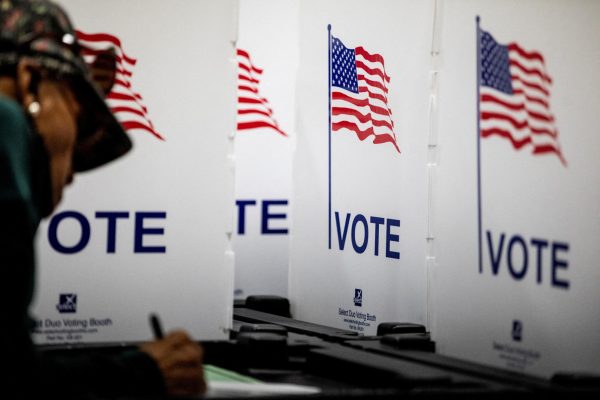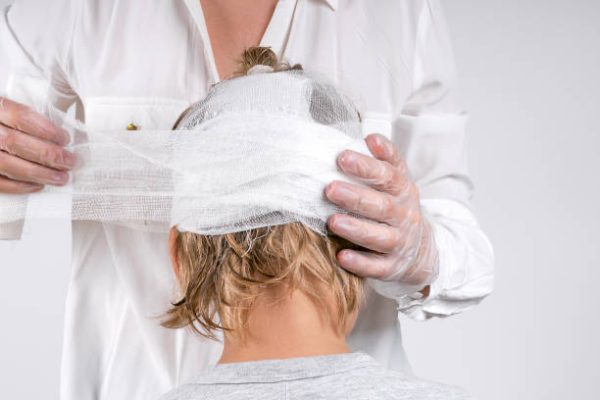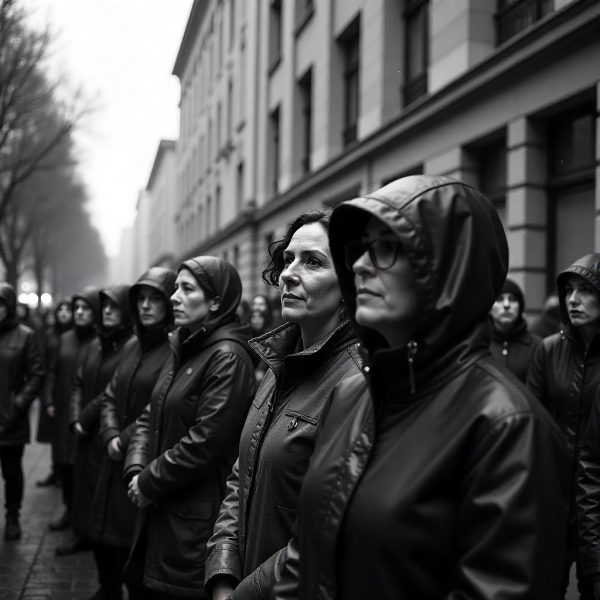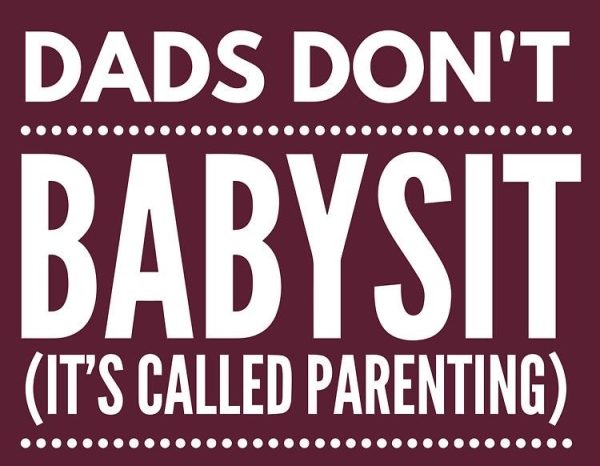Mental health resources lacking at school, OPS
Safe2Help poster in planetarium hallway.
Mental health isn’t taken seriously enough in Omaha Public Schools. There are over 1,000 students currently enrolled at school here. For those 1,000 kids, we have one community therapist, one social worker and 12 school guidance counselors. Statistically that’s roughly one counselor for every 160 kids.
Students see the Safe2Help phone number and the panic attack posters plastered on the walls, but are those enough? The school offers therapy through a licensed mental health professional, Jerry Vobejda, that works for Methodist Community Counseling. Demand for a session is high. School social worker Anne Beacom says appointments are fully booked.
“His caseload is currently full, and he has a wait list,” Beacom said. “We could definitely use more than one therapist.”
Having a completely full schedule means that some kids are left with no way to receive therapy at school. Vobejda says that although an unfortunate fact, it’s telling of how many students he’s able to help.
“While I would say the resources are adequate, they may not be optimal,” Vobejda said. “As the primary provider of mental health therapy services within Burke High, my caseload is often full, leaving some students looking elsewhere for needed services. The fact that my caseload is often full shows that the Methodist Community Counseling program benefits a wide array of students.”
Beacom is also a licensed clinical social worker, and she’s able to help students with their needs five days a week.
“I am on staff as an OPS employee,” Beacom said. “I am here full time at Burke and am here to provide supportive and crisis counseling to students as needed.”
Although the resources we have here help, some students are hesitant to reach out to adults and fly under the radar too easily. Adults don’t notice differences in kids’ behavior and with so many students at the school it’s hard to pay attention to every single one. Some also don’t know where to go or are scared about what the consequences of reaching out might be.
“I think teens can definitely be hesitant to reach out for help, for a number of reasons: they don’t know who to ask, or where to go for help, they don’t want to worry their parents, they have tried therapy in the past and it didn’t work, [or] they don’t have time for therapy,” Beacom said.
Omaha Public Schools approved a larger budget for this school year than they have in previous years with a sum of $710 million. 78% of the budget goes to teacher salaries. A large amount of money has also been going towards the new career academies that have been implemented and building new schools like Westview. The construction of Buena Vista alone cost $92 million. In 2018 voters approved a $409 million bond program. $352 million of that bond went to construction costs.
In 2021 OPS also received $280 million in ESSER (elementary and secondary school emergency relief) funds. The district spent $149.9 million on academic recovery and support, $116.5 million on infrastructure, $4.4 million on family and community engagement and $8.5 million on student and staff well-being. However, most of these funds went to programs or training for staff. An update proposed in February 2022 allocated an extra $2.5 million to employee wellness fairs, employee gym memberships and health and wellness apps. Spending so much money on construction and academies but not investing in students’ health is a big problem. OPS has a huge budget, and they should invest it more into making sure that students feel protected at school.
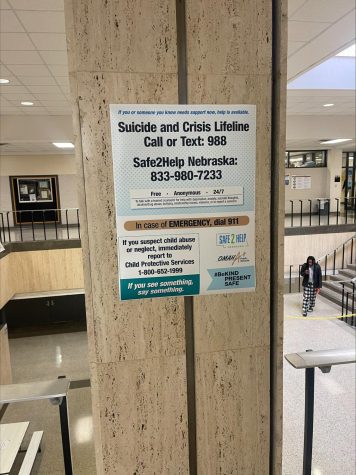
Vobejda believes that the school does the best they can with what they have, and says that joining school clubs and activities can also help improve a students well being.
“One issue that can get overlooked is the school’s primary responsibility to educate the students that walk through their doors. Part of that goal is to help reach students that may need extra help. Within that pursuit, if a student would benefit from mental health support, the school utilizes the resources in the community to the best of its ability, whether those resources are available in the school or not,” Vobejda said. “Outside of professional services, Burke hosts many school clubs, athletics and other extra-curricular activities that students can participate in. Any of these activities can benefit a student’s mental health. Feeling a greater connection to the school provides students with an increased sense of purpose and drive, two qualities that have a profound impact on one’s sense of self.”
If students need help, they’re encouraged to reach out to one of the several trusted professionals in the building. Although staff might feel like the mental health resources are enough, some students like junior Rosaria Kanoski don’t feel the same.
“I think many students deal with elevated anxiety and depression on top of high work loads and the pressure that comes with being a student, along with outside factors like home life, jobs, sports and relationships,” Kanoski said. “I think the [guidance] counseling staff is helpful for school related issues, but for mental health concerns your only options are Ms. Beacom or Mr. Vobejda. I think that a lot of the counseling staff is out of touch with the needs and concerns of students and have different priorities such as vaping or attendance so they don’t look deeply into a student’s life because of their focus on those issues.”
OPS believes that the same elementary school fixes will still work for teenagers about to enter life after high school, but that’s not true. As we get older our problems grow bigger, and adults need to be aware of that. Kanoski says that listening to students would help.
“I think having a safe space for students that is built around student input would help students feel a lot more comfortable in school and to help them handle their mental health,” Kanoski said.
The suicide and crisis lifeline number is 988. It’s available 24 hours a day.
Your donation will support the student journalists of Omaha Burke High School. Your contribution will allow us to purchase equipment and cover our annual website hosting costs.



